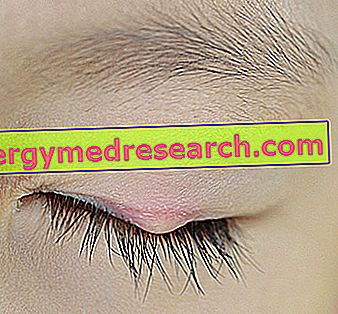Some curiosities
The hair is exclusive to the skin of mammals.
They can be divided into two categories: terminal hair and fleece hair. The terminal ones are larger, more rigid and pigmented. The hair of the fleece, on the other hand, is shorter, softer and thinner, practically invisible given the lack of pigmentation.

It is not at all true that women have less hair than men. The number of hair follicles is in fact roughly the same; in men, however, the number of terminal hairs is greater, more striking because they are thicker and pigmented.
In prehistoric times it is likely that men had a much more abundant supply of terminal hairs than the present one, because these represent a valid defensive system against the bad weather. The hairs, in fact, especially when they are erect, retain a layer of air, which forms a sort of insulating pad, preventing the loss of body heat.
Hair functions
The most important function of hair is perceptual. In fact, these epidermal formations function as real sensor mechanisms, capable of capturing even very light tactile stimuli. Hair follicles are surrounded by a dense nervous network and function as a kind of lever that amplifies tactile stimuli.
Hair can also have an aesthetic and sexual appeal. Hair, for example, is a typically feminine weapon of seduction, capable of giving a certain charm even to the male face.
Furthermore, the hairs, especially the axillary ones, have the function of spreading apocrine sweat, rich in substances called for sexual attraction, called pheromones.
The hairs provide some protection against physical and chemical agents. Those of the eyebrows, for example, prevent sweat from falling into the eyes; they are also important for facial expressions and allow us to express many moods. The hairs of the nose and ears hinder the entry of foreign bodies, while the hair, if abundant, effectively shelters from the sun and traumas.
Hair is also a good indicator of environmental pollution, as it is able to absorb and retain certain harmful substances, such as lead and mercury. The analysis of the hair is also important in forensic medicine, since certain poisons are concentrated here, such as arsenic, and drugs, such as opiates (morphine, heroin and derivatives) and certain alkaloids (cocaine, crack).
Hair color (and hair)
It is due to the presence of melanocytes at the level of the basal layer of the hair bulb. The color depends on the quantity and type of melanin that is produced, as well as on the size of the melanosomes.
In dark hair, for example, eumelanin is present; in those blond and red feomelanin.The pigment is always limited to the cortex.
As we age, the melanocytes become less and less active, until the production of melanin is completely stopped. In this case we speak of graying ( white hair ), a condition that becomes evident on average from 40 years onwards. However, there are frequent exceptions, as its manifestation is genetically programmed.
It is said that a serious trauma can lead to almost instantaneous graying. It is actually an urban legend, since hair, like hair, is a dead thing and as such cannot respond to traumatic stimuli.
However, it is possible that the hair may turn gray following a trauma, even if the phenomenon does not occur overnight. A possible explanation is the following: first of all we must keep in mind that terminal hairs are more sensitive to graying than those of the fleece. Following a trauma (fear, emotion, stress, health problems etc.) there may be a thinning of the hair, due to the shortening of the life cycle of thinner hairs, which fall rapidly leaving more space to the depigmented terminal hairs. For this reason a traumatic event can lead to graying, even if the thing is not so lightning as it is proposed in certain films, comics or cartoons.
Some numbers and curiosity
In both sexes there are about 5 million hair follicles. The length of the hair depends on the growth rate, which varies according to the area of the skin, sex and race.
The number of hair, on average, varies from 100 to 150 thousand, with wide variations due to age, race and color. For example, those with fair hair tend to have more hair than those with dark hair.

The hair is born smooth, wavy or curly based on the shape of the bulb from which it originates. If this cavity is circular the hair grows straight, since the proliferation of the cells of the matrix is the same in every point. If, on the other hand, the bulb is more or less crushed, cellular proliferation occurs at different speeds and the hair grows more and more wavy until it becomes curly.
Hair and hair growth »



